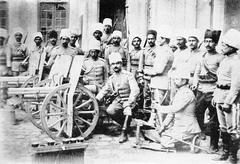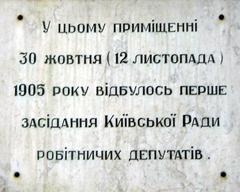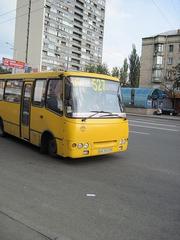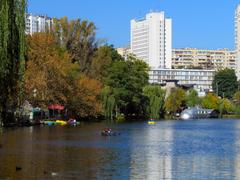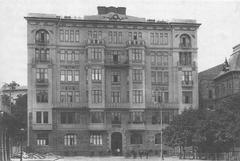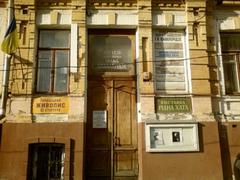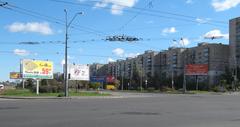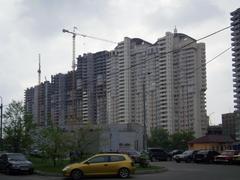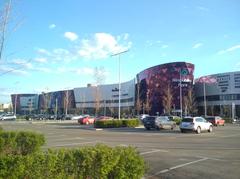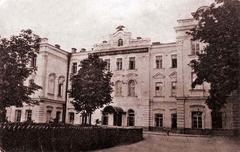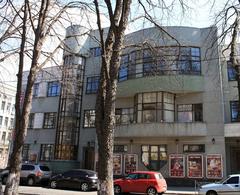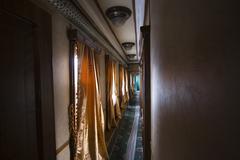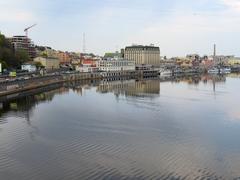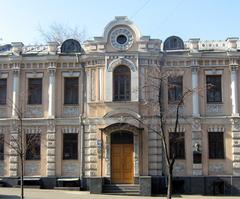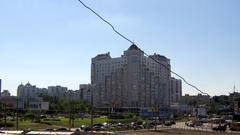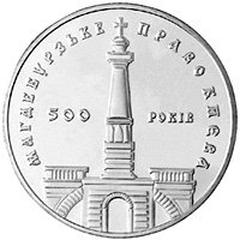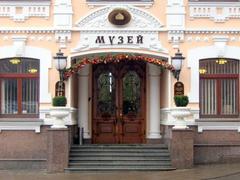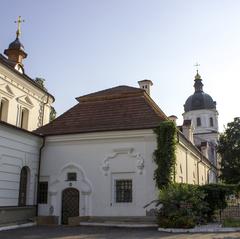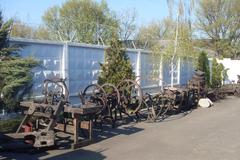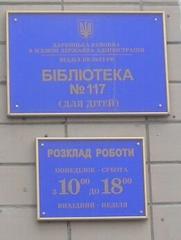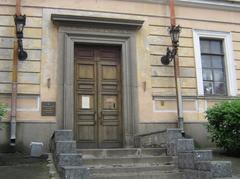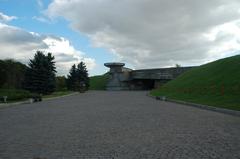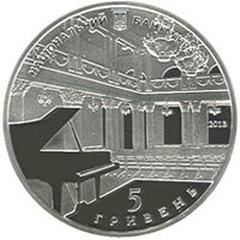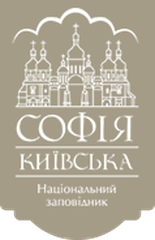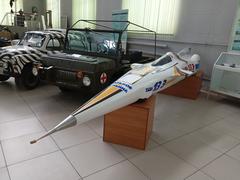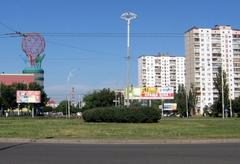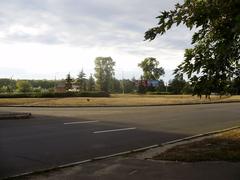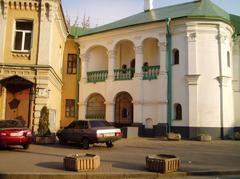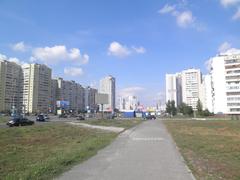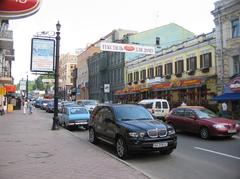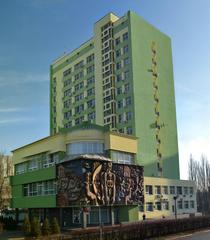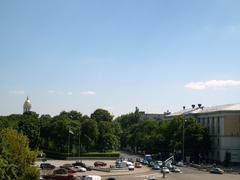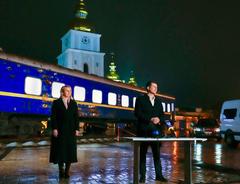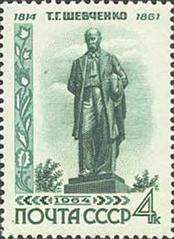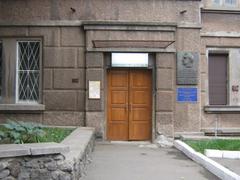
Lesia Kurbasa Avenue, Kyiv, Ukraine: Visiting Hours, Tickets, and Historical Sites Guide
Date: 04/07/2025
Introduction
Lesia Kurbasa Avenue is a prominent street in Kyiv’s Sviatoshynskyi district, emblematic of the city’s postwar expansion, Soviet-era urban planning, and contemporary efforts to celebrate Ukrainian cultural identity. Originally developed during the rapid growth of Kyiv in the 1960s and 1970s, the avenue is both a key transportation artery connecting western neighborhoods and a living tribute to the legacy of Les Kurbas—a visionary Ukrainian theater director. Visitors exploring Lesia Kurbasa Avenue will encounter a blend of functionalist architecture, green urban spaces, vibrant community life, and public art, making it a unique destination for those interested in Kyiv’s urban evolution and local culture (my.ua, Kyiv City Administration, pragmatika.media).
Contents
- Early Urban Development and Historical Context
- Soviet-Era Infrastructure and Transport Evolution
- Renaming and the Legacy of Les Kurbas
- Architectural and Environmental Features
- Cultural Significance and Community Life
- Nearby Attractions and Visitor Information
- Practical Visitor Tips and FAQ
- Conclusion
- Sources and Further Reading
Early Urban Development and Historical Context
Lesia Kurbasa Avenue, previously known as 50-richchia Zhovtnia Avenue, is situated in Kyiv’s western Sviatoshynskyi district. The area experienced significant development in the 1960s–1980s, driven by the need to accommodate a growing urban population. Large residential complexes such as Borshchahivka were constructed following Soviet urban planning principles: wide boulevards, integrated public transport, and generous green spaces. The avenue’s creation marked an important phase in Kyiv’s modernization and urban expansion (Wikipedia: Trams in Kyiv).
Soviet-Era Infrastructure and Transport Evolution
The growth of Lesia Kurbasa Avenue was closely tied to the extension of Kyiv’s tram and public transport network. From the early 1960s, tram lines were expanded westward, linking the new residential districts to the city center. By the late 1970s, Kyiv’s tram system reached its peak, with over 285 kilometers of lines, and Lesia Kurbasa Avenue played a vital role in daily transportation for residents (Wikipedia: Trams in Kyiv).
In the post-Soviet era, some tram lines were replaced by buses and marshrutkas (minibuses), while proximity to the Sviatoshyn metro station continues to provide efficient access to central Kyiv and other districts (facts.net).
Renaming and the Legacy of Les Kurbas
The avenue’s renaming from 50-richchia Zhovtnia to Lesia Kurbasa Avenue is part of Ukraine’s decommunization and cultural renaissance. Les Kurbas (1887–1937) was a pioneering theater director and founder of the Berezil Theater, known for his innovative contributions to Ukrainian performing arts and his tragic persecution under Stalinist repression. By honoring Kurbas, Kyiv underscores its commitment to restoring national memory and celebrating cultural icons (my.ua, pragmatika.media).
Architectural and Environmental Features
Lesia Kurbasa Avenue is characterized by late Soviet “Khrushchyovka” and panel apartment blocks—functional, high-density housing designed to address the city’s housing needs. The wide avenue features mature chestnut and linden trees, landscaped medians, and an abundance of green spaces typical of Kyiv’s reputation as one of Europe’s greenest capitals (touristplaces.guide).
Recent urban greening initiatives have further improved parks and courtyards along the avenue, making it an inviting space for both residents and visitors (facts.net).
Cultural Significance and Community Life
The avenue is a vibrant axis of community activity. Local markets, cafes, bakeries, and seasonal festivals foster a lively street life. Murals and public art installations celebrate Ukrainian folklore, theater, and literature. Community centers and schools frequently host performances and workshops inspired by Les Kurbas’s avant-garde spirit. The Les Kurbas monument, a focal point of the avenue, serves as a gathering place for cultural events and commemorations (pragmatika.media).
Nearby Attractions and Visitor Information
Green Spaces and Parks: The avenue is close to Sviatoshyn and Nyvky Parks—large recreational areas ideal for walking, jogging, cycling, and family outings.
Cultural Institutions: While there is no major theater on the avenue itself, nearby community centers host various events, and the Kyiv National University of Construction and Architecture has affiliated buildings in the area.
Public Art and Monuments: Public art installations and commemorative plaques enhance the avenue’s cultural landscape.
Shopping and Dining: Numerous supermarkets, local markets, specialty shops, and eateries line the avenue, offering Ukrainian cuisine and international options.
Accessibility: The avenue is open 24/7, free of charge, and is pedestrian-friendly with wide sidewalks and some wheelchair-accessible crossings. Public transport options include buses, trolleybuses, marshrutkas, and nearby metro stations Sviatoshyn and Akademmistechko (Kyiv Metro Map).
Practical Visitor Tips and FAQ
How to Get There
- By Metro: Take the blue line to Sviatoshyn or Akademmistechko stations, then walk or take a bus.
- By Bus/Trolleybus: Multiple routes run along the avenue.
- By Car/Taxi: The avenue is accessible via the Kyiv Ring Road.
Safety and Etiquette
- The district is generally safe with active community policing.
- Use designated pedestrian crossings and be mindful of traffic, especially during peak hours.
- Kyivans are friendly but reserved; politeness is appreciated.
Best Time to Visit
- Spring and autumn offer the most pleasant weather and showcase the avenue’s greenery. Summer brings outdoor events and markets.
FAQ
Q: What are the visiting hours and ticket requirements?
A: Lesia Kurbasa Avenue is a public street accessible at all times, with no entrance fees.
Q: Are there guided tours?
A: While there are no tours dedicated solely to the avenue, some urban history and Soviet architecture tours include it in their itineraries.
Q: Is the avenue accessible for people with disabilities?
A: Most sidewalks are wide and paved, though some older buildings may be less accessible.
Q: Is parking available?
A: Limited street parking is present, but public transportation is recommended.
Q: What languages are spoken?
A: Ukrainian is the official language; Russian is also common. English is spoken by some younger residents and in service establishments.
Conclusion
Lesia Kurbasa Avenue is a living reflection of Kyiv’s 20th-century history, Soviet-era urbanism, and contemporary cultural renewal. Its blend of residential life, green spaces, public art, and cultural events offers an authentic window into the everyday rhythms of Ukraine’s capital. Whether you are interested in architecture, community culture, or local dining, the avenue offers a meaningful and accessible experience. Stay updated on events, tours, and travel tips by downloading the Audiala app or visiting Kyiv’s official tourism platforms.
Sources and Further Reading
- Lesia Kurbasa Avenue: History, Cultural Significance, and Urban Evolution in Kyiv, 2025, my.ua
- Visiting Lesia Kurbasa Avenue in Kyiv: A Guide to History, Attractions, and Practical Information, 2025, Kyiv City Administration
- Exploring Lesia Kurbasa Avenue in Kyiv: History, Attractions, and Visitor Tips, 2025, pragmatika.media
- Soviet-era Tram Network and Urban Transport in Kyiv, Wikipedia
- Facts About Kyiv, facts.net
- Top Tourist Attractions and Places Map of Kyiv, touristplaces.guide

